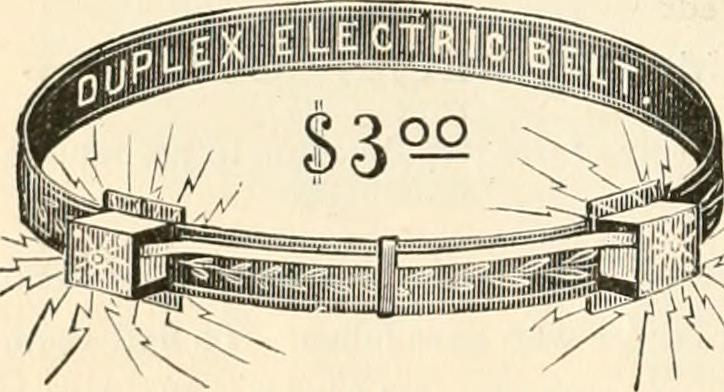
Electricity was first used for lighting in the U.S. in the late 1800s. By 1900 the idea of using electrical power to cure illnesses and improve strength without drugs — or exercise — had many scientists, physicians, and the general populace convinced of the medical wonders of the new technology. Conditions ranging from rheumatism, gout, asthma, paralysis, palpitations, ‘female complaints,’ shortness of breath, writer’s cramp, and more were promised relief or cure with the proper electric garment, accessory, or treatment.
Similar to the current idea of analogizing of our brains to computers and the study of brain-computer interfaces (BCI), 19th-century scientists focused on the new technology of their times and viewed human bodies as batteries that needed charging.
An advertorial for electric belts in The Los Angeles Herald in 1909 stated, “The word health now means a normal supply of electricity in the body, and the word disease means an insufficiency of that power.”

In Pseudo-Science and Society in Nineteenth-Century America, John Greenway wrote that when electric belts were on the market, “the therapeutic effects of the unseen world of electricity seemed equally unintelligible to scientists and quacks alike. Although part of the early interest in electrotherapy went the way of entertainment and quackery,” Greenway continued, “that ‘quackery’ often becomes obvious only in retrospect.”
Doctors in the 1880s believed many health conditions including nervousness and anxiety stemmed from social stressors of the time, including “steam power, the periodical press, the telegraph, the sciences, and the mental activity of women,” George Beard wrote in his 1881 book, American Nervousness: Its Causes and Consequences.
The Atlantic compares the 19th century’s association of the introduction of electrical power with problems and ‘cures’ of the time to the interest in fitness and health wearables in the age of computers and the internet, when we look to electronics and the world wide web for answers and solutions.



